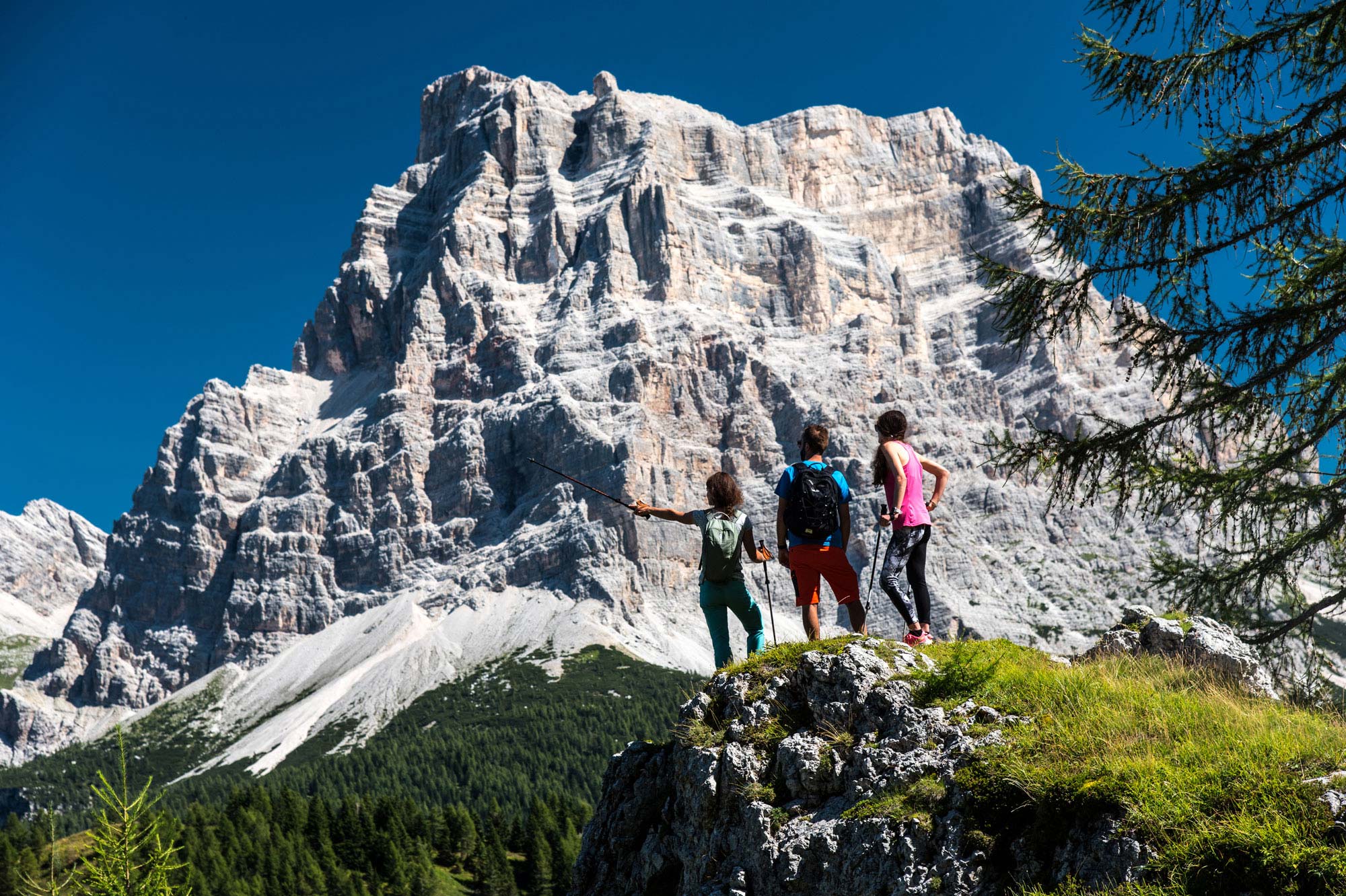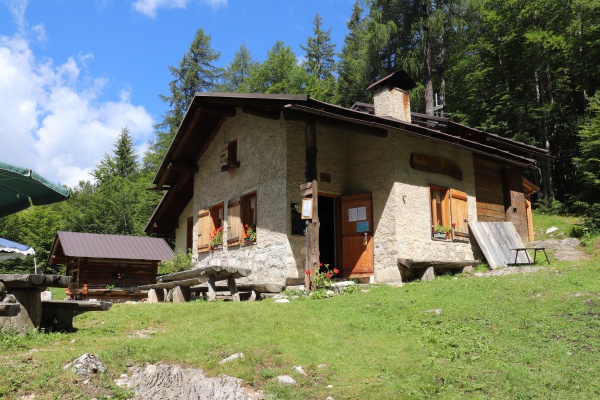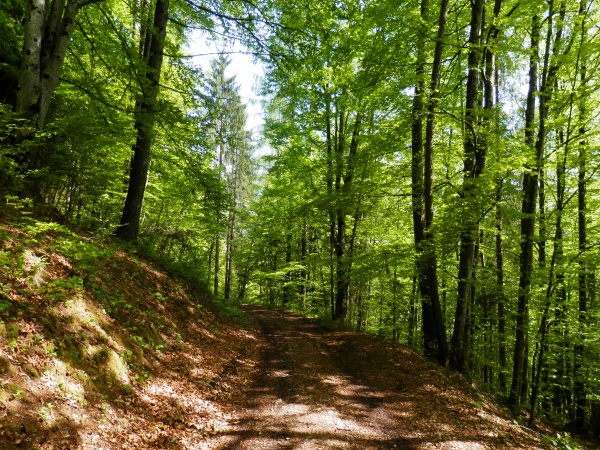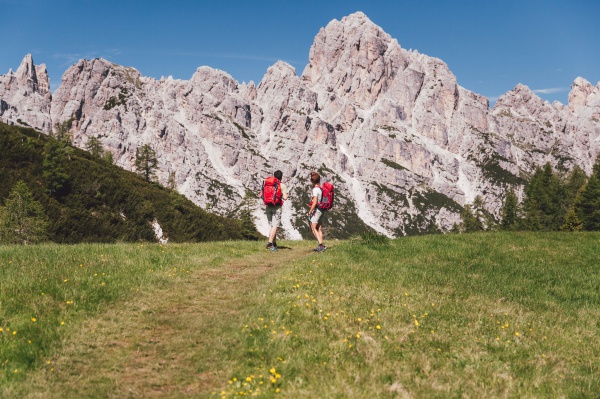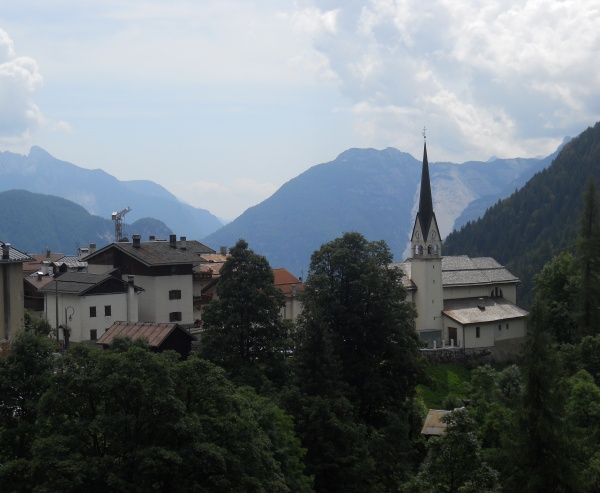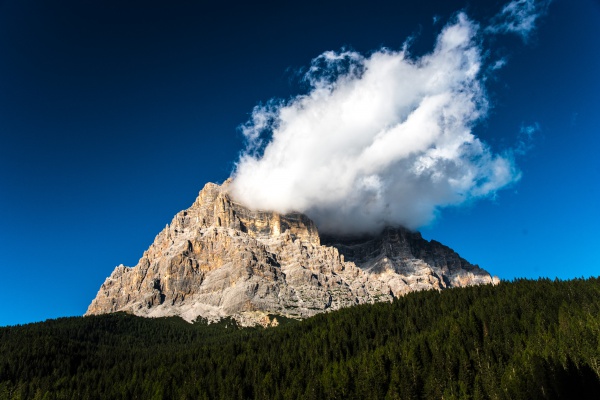The origins
We know little about life in the Val di Zoldo, far from trade routes and devoid of economic interest, until the Late Middle Ages. We can imagine that the area did not have a stable population during prehistorical times, unlike other valleys in the Dolomites, where signs of stable settlements from the period have been found. It is also reasonable to assume it was not regularly inhabited during the Pre-Roman period (although some Noricans may have lived here) and the Roman Age. Three inscriptions have been found from this latter period around the Civetta, probably marking the borders between the areas of Iulium Carnicum (Zuglio, in the province of Udine) and Bellunum (Belluno).
So for centuries, the Zoldano area was a border area located between the areas of Belluno (to which it belonged) and the Cadore.
The Middle Ages
As already mentioned, the early Middle Ages are shrouded in mystery, and the few events we have any news of are essentially legends. It is probable that under the Lombards there was an initial, primitive administrative system akin to the present-day Regole, which lasted until the 19th century.
The first mention of the Zoldano area dates to a papal bull of 1185, which tells us it was administered by the parish church of San Floriano in Forno di Zoldo, under the charge of the Bishop of Belluno. Thereafter, the area came under the control of Ezzelino III da Romano (1249), along with the Agordino area, and subsequently (1347) of the Avoscano, native to the upper Cordevole Valley. Soon afterwards, it came under the control of Louis I of Hungary, who assigned it to the Da Carrara family. Events thereafter brought the area under the control of Venice (1404), where it remained until the fall of the Republic (1797).
La Serenissima
A battle between the Republic of Venice and the League of Cambrai took place in the surrounding area in 1508, and many Zoldani contributed to the victory of La Serenissima, under the command of Bartolomeo d'Alviano.
From this period onwards, the valley began to prosper thanks to forestry, supplying timber for the Arsenal and the pilework of Venice, and especially the steelworking industry (just think of the numerous place names that recall the existence of workshops and foundries). Between the 16th and 18th centuries, a number of fine buildings were constructed that remain today as a testament to the area’s prosperous past.
Some curiosity
From ancient times, the Val di Zoldo has been a mining area, with furnaces for smelting minerals, dating back to as early as the 14th century on some mountain passes. A number of local place names reflect this vocation of the area, such as Fusine, derived from the local dialect term fosina, meaning forge.
The 19th and 20th centuries
After the fall of the Republic of Venice, the valley fell first into French hands, then Austrian, then French, then Austrian once more. The Austrians funded a number of public works, including improvements to the present-day SS 251 trunk road, and created a topographical map of the Kingdom of Lombardy-Venetia, which was of particular importance, because it provided an accurate picture of the mountain landscape.
After playing a part in the events of the Risorgimento, Zoldo Alto, Zoppè and Forno di Zoldo became part of the Kingdom of Italy, in 1866, the first of the areas deriving from the administrative divisions Regola Grande of Coi, Regole Associate of Mareson, Pecol, Pianaz and Fusine and the Regola of San Tiziano or Goima). In the meantime, the dawn of modern industry led to the demise of the traditional craftsmanship activities, so a large slice of the local population was forced to move away in search of work. During WWI, the Zoldano area was occupied by the Austrian troops until the Armistice of 3 November 1918.
Some curiosity
The Zoldano area has been struck by severe flooding and natural disasters on several occasions. The 1966 flood was the most devastating of the last century, and Forno was hit particularly badly. An earlier flood in 1890 had already caused both deaths and material damage, and thus, given the fragile nature of the land, some massive defensive hydrogeological work has been carried out in recent years, in an attempt to create safety conditions able to prevent such damage being caused again.
The Val di Zoldo is known above all for the large number of excellent artisan ice cream makers that have literally invaded the rest of Europe, in particular Germany, but also Austria, Switzerland, France, Belgium, the Netherlands and Hungary. The ice cream maker’s trade is no easy one, but the Zoldani were immediately successful, thanks to the excellent quality of their artisan product, made using local techniques, which soon won over the market in many cities in Europe.
Val di Zoldo today
On 23 February 2016, following a referendum, the new Municipality of Val di Zoldo was established, bringing together the Municipalities of Zoldo Alto and Forno di Zoldo. This decision was prompted by the strong sense of common identity that has always bound the whole area together.









